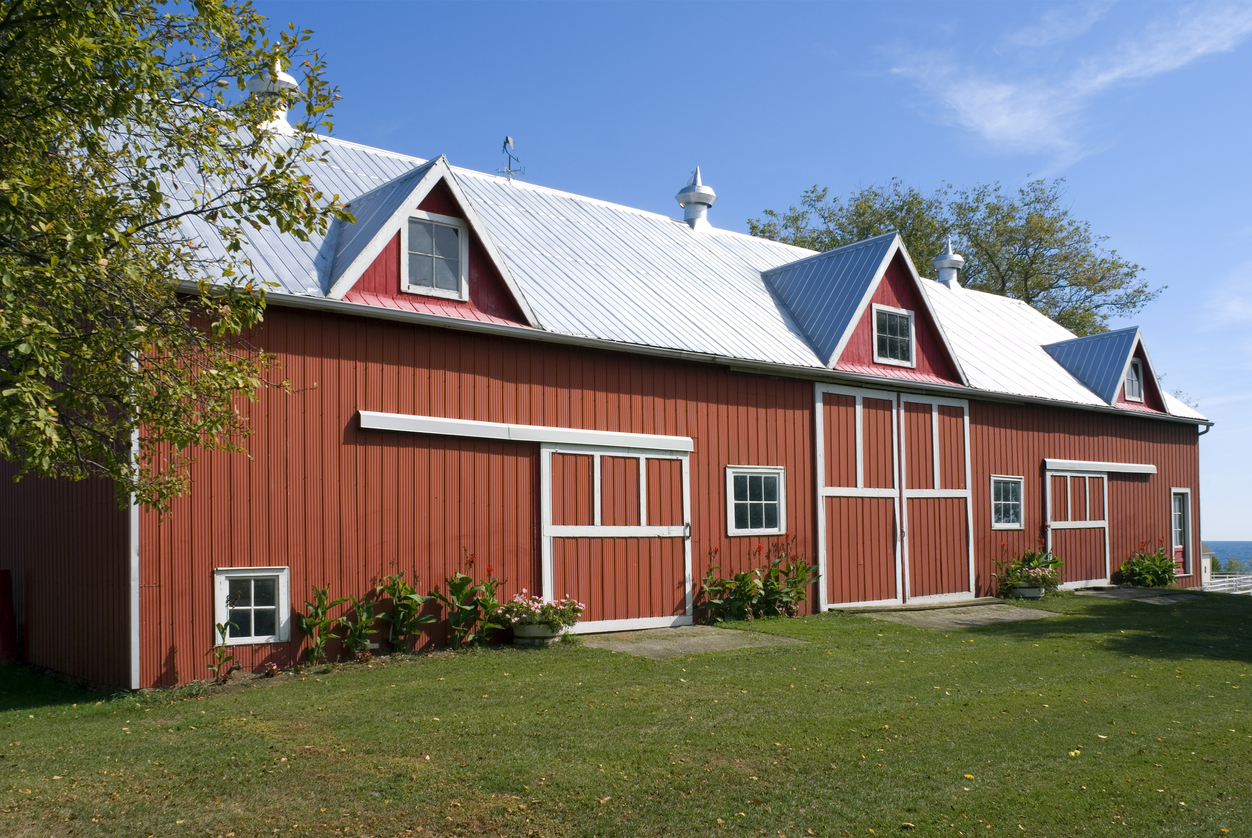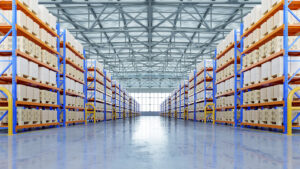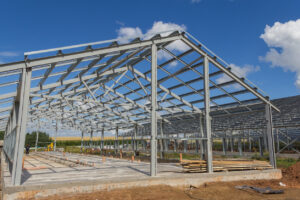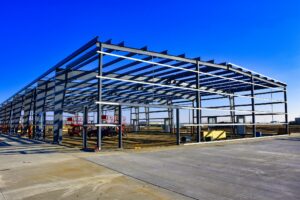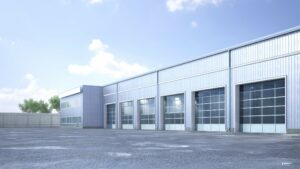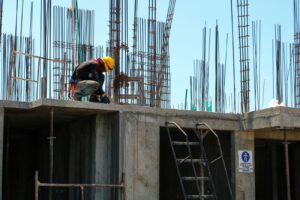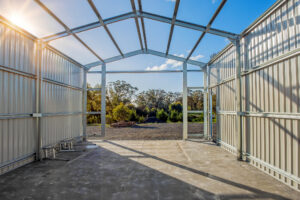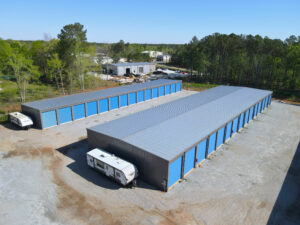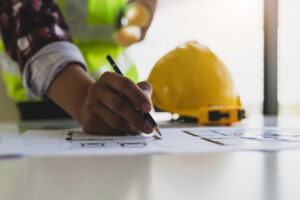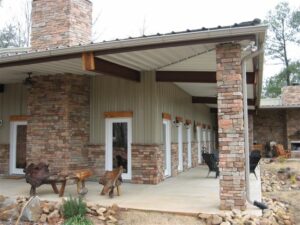Welcome to our guide on building and designing the perfect facility for an indoor baseball field.
Before we jump in, did you know that the first indoor baseball field, the Astrodome, was opened in 1965 in Houston, Texas? It was home to the Houston Astros and was famously dubbed the “Eighth Wonder of the World” due to its innovative design and domed stadium facility.
Now, to the focus of this article: We will discuss the various aspects of constructing a top-notch indoor baseball facility. From understanding the basics to selecting the right materials for indoor baseball and designing player-friendly facilities, we’ve got you covered. So, let’s dive in!
Table of Contents:
- Understanding the Basics of Indoor Baseball Fields
- Planning Your Indoor Baseball Field Building
- Designing the Indoor Baseball Facility
- Construction Materials and Techniques for Indoor Baseball Fields
- Lighting and Ventilation Considerations
- Conclusion
- Frequently Asked Questions
Understanding the Basics of Indoor Baseball Fields
Indoor baseball fields provide a fantastic opportunity for players to practice and hone their skills regardless of the weather. These facilities play a crucial role in developing players and maintaining the sport’s popularity. By offering a controlled environment design, indoor baseball facilities eliminate the limitations imposed by outdoor conditions.
Their importance cannot be overstated, as they allow baseball enthusiasts to enjoy the game year-round. Whether it’s to train, hold events, or foster community engagement, indoor baseball fields are a game changer.
The Importance of Indoor Baseball Fields
Indoor baseball fields revolutionize the way players train by ensuring an uninterrupted schedule. They provide a protected environment where players of all levels can practice and play under ideal conditions. With the absence of unpredictable weather, players can focus on perfecting their skills and improving game performance.
Moreover, indoor fields offer flexibility for hosting games and events, extending the baseball season beyond traditional boundaries. These facilities promote teamwork, physical fitness, and camaraderie among players, making them an integral part of any vibrant baseball community.
Imagine a group of young baseball players stepping onto the indoor field, their eyes wide with excitement as they take in the perfectly manicured turf beneath their feet. The bright lights overhead illuminate the field, casting a vibrant glow that adds an air of anticipation to the atmosphere.
The comfortable seating for spectators allows family and friends to cheer on their loved ones with enthusiasm, creating a supportive and electric energy that fills the air.
As the players take their positions in the dugouts, they can’t help but feel a sense of pride and determination. The fencing and netting surrounding the field not only provide a visual boundary but also serve as a reminder of the dedication and skill required to play this beloved sport. The scoreboard, displaying the teams’ names and the current score, adds an element of competition and excitement, driving the players to give their all.
Prefab recreational buildings can be as large as needed and include space for locker rooms for both men and women, a cafeteria, and office space for administrative staff. SteelCo is trusted by individuals and private or public businesses to provide design-build services and deliver PEMB materials nationwide for construction.
Key Features of an Indoor Baseball Field
An indoor baseball field must be equipped with essential features to provide an authentic playing experience. These include a well-maintained playing surface, adequate lighting, comfortable seating for spectators, and functional dugouts.
Additionally, fencing, netting, and scoreboards are crucial components that enhance the overall atmosphere and gameplay.
Proper safety measures, such as padding on walls and bases, also play a pivotal role in preventing injuries. These features, when combined, create an immersive and enjoyable environment that mirrors outdoor baseball fields.
Furthermore, the attention to detail in an indoor baseball field is truly remarkable. The playing surface is meticulously maintained, ensuring a consistent and reliable field for players to showcase their skills. The lighting is strategically designed in the indoor baseball facility to eliminate shadows and provide optimal visibility, allowing players to track the ball with precision.
The comfortable seating for spectators not only enhances the overall experience but also encourages a sense of community and support among fans.
Additionally, the functional dugouts offer a space for players to strategize, bond, and recharge between innings. The fencing and netting surrounding the field not only protect spectators but also add an aesthetic appeal, creating a visually pleasing backdrop for the game. And let’s not forget the scoreboards, which not only keep track of the game but also add an element of excitement and anticipation as the numbers change with each play.
Planning Your Indoor Baseball Field Building
Before embarking on your indoor baseball field construction project, careful planning is essential. This section will guide you through determining the optimal size and layout, as well as selecting the most suitable location.
Constructing an indoor baseball field involves a meticulous approach to ensure a successful outcome.
Beyond the basic considerations of size and layout, it’s crucial to think about the materials and technology that will be used in the construction. From high-quality artificial turf to state-of-the-art lighting systems, each component plays a vital role in creating a top-notch indoor playing environment.
Determining the Size and Layout
The size of your indoor baseball field depends on various factors, including available space and budget constraints. While replicating the exact dimensions of an outdoor field may not always be feasible, ensuring an adequate playing area is crucial.
Consider the dimensions of the infield, outfield, and baselines when planning the layout.
Moreover, think about incorporating additional features such as batting cages, pitching mounds, and training areas to cater to a wide range of player needs. Creating a versatile space that can accommodate different training drills and practice sessions will enhance the overall functionality of the indoor field.
Furthermore, allocate space for spectator seating, restrooms, and other amenities. It’s also essential to create functional spaces for team dugouts, coaching staff, and umpires. Designing these indoor baseball facility areas with comfort and efficiency in mind will contribute to a seamless game-day experience for all involved.
Did You Know ?
In order to provide a complete and regulated infield experience in an indoor facility, you would generally require a space of about 170 feet by 170 feet to allow for the full range of motion for the first baseman, second baseman, third baseman, catchers, and base runners. These dimensions can be modified to suit the available space and the planned use of the facility.
Choosing the Right Location
The location of your indoor baseball field is a critical decision. Look for a site that is easily accessible to players and spectators, with ample parking facilities. Consider the surrounding area to ensure it can accommodate the necessary infrastructure and amenities.
Proximity to schools, sports complexes, and residential areas can enhance the appeal and accessibility of your facility. Engage with stakeholders to identify potential partnerships and opportunities for community involvement.
Building strong relationships with local organizations and businesses can not only benefit your indoor baseball field but also foster a sense of community pride and support.
Pro tip:
The zoning for an indoor baseball field can vary depending on the local municipality’s regulations. Generally, the land must be zoned for recreational or commercial use to allow for sports facilities like an indoor baseball field.
Designing the Indoor Baseball Facility
Now that you have defined the size, layout, and location, it’s time to focus on designing the indoor baseball field itself. This section will explore the essential elements of a baseball field design and discuss the incorporation of player facilities and amenities.
Designing an indoor baseball field involves more than just laying down the basics. It requires careful consideration of every detail to ensure a top-notch playing experience for athletes and spectators alike.
From the type of grass on the field to the material of the bases, each element plays a crucial role in creating an authentic and professional environment.
Essential Elements of a Baseball Field Design
An authentic baseball field design includes elements such as a well-maintained playing surface, pitcher’s mound, outfield fences, and bases. Attention to detail is crucial to ensure the field meets industry standards and provides a seamless player experience.
When designing the playing surface, factors such as shock absorption, ball bounce, and player safety must be taken into account. The pitcher’s mound should be constructed to regulation height and slope for optimal gameplay. Outfield fences not only demarcate the field but also add to the aesthetics and functionality of the space.
Consult with experts to determine the optimal playing surface materials and the incorporation of warning tracks and bullpens. Proper drainage systems must also be installed to cater to any potential water accumulation.
Incorporating Player Facilities and Amenities
Player facilities and amenities greatly enhance the overall experience of your indoor baseball field. Consider including locker rooms, training areas, and batting cages to cater to the needs of players. Comfortable seating, concession stands, and restrooms for spectators are equally important.
Creating a welcoming environment that offers functionality and comfort will attract players, fans, and potential sponsors. Ensure proper ventilation and climate control to maintain a pleasant atmosphere throughout your indoor baseball facility.
Furthermore, incorporating technology such as video analysis systems and scoreboard displays can elevate the playing experience and provide valuable insights for players and coaches. The integration of high-quality lighting solutions is essential for evening games and practices, ensuring visibility and safety on the field.
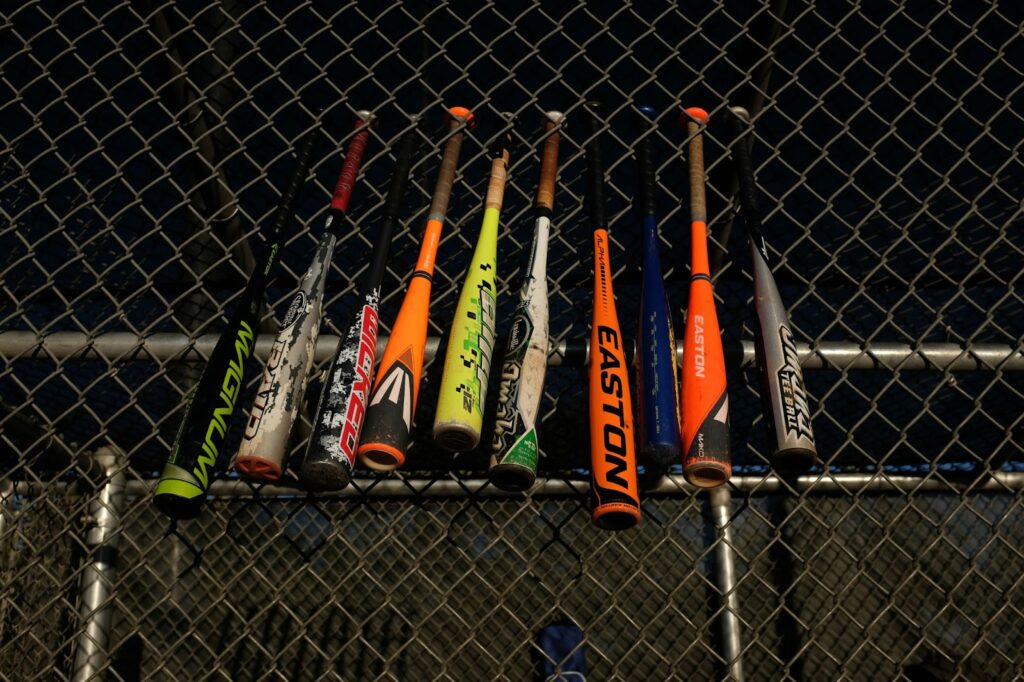
Construction Materials and Techniques for Indoor Baseball Fields
The choice of construction materials and techniques can significantly impact the durability and safety of your indoor baseball field. This section will discuss selecting the right materials and explore modern construction techniques suitable for indoor sports facilities.
When it comes to selecting durable and safe materials for indoor baseball fields, there are a few key factors to consider. One important material is synthetic turf, which offers a range of benefits. Not only does it provide durability and low maintenance, but it also ensures consistent playing conditions. Additionally, incorporating a shock-absorbing underlayment beneath the turf can further enhance safety and player comfort, reducing the risk of injuries.
But it’s not just the playing surface that requires careful consideration. Fencing and netting materials also play a crucial role in indoor baseball field construction. These materials should provide optimal visibility for spectators and players without compromising safety.
Consulting experienced contractors or architects specializing in sports facility construction can help you select materials that meet industry standards and regulations, ensuring a safe and enjoyable environment for everyone involved.
Modern Construction Techniques for Indoor Sports Facilities
The construction industry is constantly evolving, offering innovative techniques for indoor sports facilities. One such technique gaining popularity is the use of pre-engineered steel structures.
These structures not only provide rapid construction, but they also ensure structural integrity. With their flexibility, they can easily accommodate changing facility requirements, making them an ideal choice for indoor baseball fields.
But construction techniques aren’t the only aspect to consider. In today’s world, energy efficiency and sustainability are becoming increasingly important. Incorporating energy-efficient practices into the construction of indoor baseball fields can have long-term benefits.
For example, installing solar panels can help offset energy consumption, reducing operating costs over time. Additionally, utilizing sustainable building materials and incorporating smart lighting systems can further promote environmental sustainability, making your indoor baseball field a responsible and eco-friendly facility.
Lighting and Ventilation Considerations
Proper lighting and ventilation are critical aspects of indoor baseball field design. This section will look at ensuring adequate lighting for indoor baseball and incorporating ventilation systems for optimal air quality.
Ensuring Adequate Lighting for Indoor Baseball
Optimal lighting is crucial for players to track the ball accurately and prevent eye strain. Implement a lighting system that evenly distributes illumination across the playing area, minimizing shadows and glare.
Utilize energy-efficient LED lighting to reduce energy consumption and provide consistent lighting levels. Collaborate with lighting experts to achieve the desired Lux levels and uniformity, meeting industry standards and regulations.
Pro tip:
Although some professional baseball stadiums have higher light levels, the recommended light level for a baseball field is 500 lux. This is the minimum light level needed for the game to be played safely and accurately.
Ventilation Systems for Indoor Sports Facilities
Efficient ventilation systems contribute to a comfortable and healthy indoor environment. They regulate temperature, humidity, and air quality, enhancing the overall experience for players and spectators.
Consult with HVAC professionals to design a system that circulates fresh air, removes excess moisture, and controls temperature. This system should consider the distinct requirements of different areas within the facility, such as player areas, spectator seating, and concession stands.
Conclusion
Building the perfect indoor baseball field requires meticulous planning, design considerations, and the use of appropriate construction materials and techniques. By understanding the basics, planning effectively, and incorporating player-friendly amenities, you can create an exceptional facility that elevates the baseball experience for players and fans alike.
Remember, each decision you make, whether it’s the right location, optimal design, or efficient lighting and ventilation, contributes to the overall success of your indoor baseball field-building project. So go ahead and embark on this exciting endeavor to create a space where the love for baseball can thrive!
SteelCo has 23+ years of experience dropshipping customizable steel building materials for indoor sports complexes and recreational facilities nationwide. Our team of experts is dedicated to helping you navigate PEMB / steel building material needs, concepts and designs, stamped engineering plans, and permits/licenses to help transform your thoughts into reality.
——————————
Frequently Asked Questions
How much space is needed for a batting cage?
The required space for a batting cage varies depending on the number of stalls and the level of play. A single stall typically needs a minimum width of 15 feet and a depth of around 70 feet. However, for multiple stalls, the depth can extend up to 136 feet. It’s crucial to include additional space for safety zones and walkways.
How much does an indoor baseball facility cost?
For a rough estimate, you might need an initial investment of $100,000 to $250,000 as start-up capital, excluding administrative and managerial equipment costs. For a more detailed and customized estimate, it’s best to consult with contractors and suppliers who can provide quotes based on your specific requirements and location.
Are indoor baseball facilities profitable?
Indoor baseball facilities have the potential to be profitable if managed effectively, with the possibility of seeing returns within a year or two. However, it’s important to conduct thorough market research and have a solid business plan in place. Consulting with industry experts and considering the local demand for indoor sports facilities can also provide valuable insights into the potential profitability of such a venture.
Do indoor baseball & softball fields need a separate field?
Indoor baseball and softball facilities often use a single large space for multiple purposes instead of having separate fields for each sport. Indoor baseball facility design is versatile, with netting and movable partitions that can divide the area into sections for batting cages, pitching lanes, and open areas for fielding practice or conditioning. This adaptability eliminates the need for separate fields for each sport in an indoor setting.
——————————
Check out these related articles:









